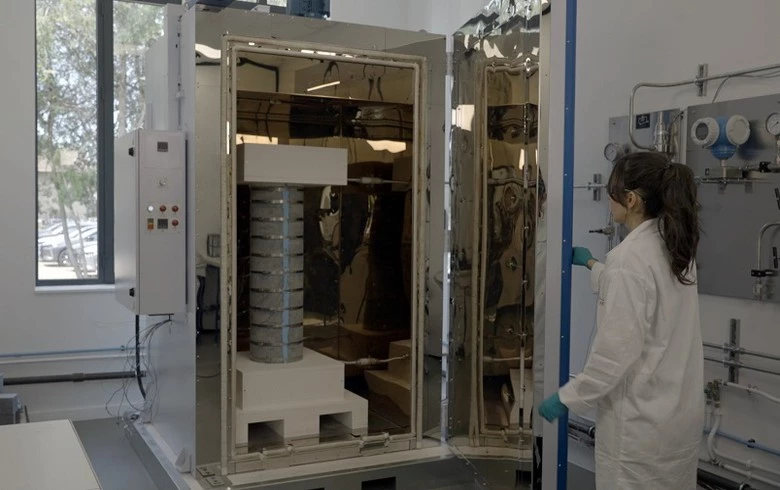
XGS Energy 400 degrees C temperature one-metre lab demonstration. Image by XGS Energy.
The company recently raised USD 20 million in additional Series A financing, which will help it progress a commercial-scale prototype of its technology in its home state. While it is not currently providing more details on its initial project, XGS states that looking ahead, it will continue to grow its team, pursue targeted research to further advance its technology, and invest in its multi-gigawatt project pipeline.
“Going forward, we’ll be focused on meeting development milestones for our first commercial projects,” XGS CEO Josh Prueher told Renewables Now in a recent interview.
XGS, which was previously known as Geothermic Solution LLC, says it has so far raised over USD 40 million. The majority of the company’s funding has gone straight into its technology as in the past 18 months it has moved from testing its system at a meter-scale in the lab to deploying at a kilometre-scale in a commercial setting, the CEO explains.
“Even a single well is a large-scale capital project. Fortunately, our investors share our belief that the market opportunity is well worth the investment to develop the technology.”
Prueher is also positive that the US Department of Energy’s Enhanced Geothermal Shot to reduce the cost of enhanced geothermal systems (EGS) by 90% to USD 45 per MWh by 2035 is achievable.
“The USD 45 per MWh target is in sight for multiple next-generation geothermal technologies which may or may not be classified as Enhanced Geothermal, including some that have been developed in just the past few years like XGS,” he says. Skills transfer from the oil and gas industry is key to that.
XGS bills its technology as decoupling geothermal energy from its historical dependence on water, making geothermal accessible worldwide wherever there are hot rocks.
“Our well design is simple and highly modular. The smallest modular unit is a single well, pipe-in-pipe heat exchanger, in which working fluid is circulated inside a steel casing, warms up, and then is returned to the surface through an inner insulated tube. At the surface, the hot working fluid can be run through off-shelf equipment to provide energy for electricity, heating, or cooling,” Prueher says.
XGS highlights the fact that its working fluid only sees the steel casing and never sees rock, meaning that its system conserves and recycles water unlike conventional technologies, which run fluid through fractures in rocks. Its system also avoids the risk of corrosion, scaling or toxic chemicals exposure.
“This well design has always been attractive, in particular to the communities in which geothermal energy is being developed, due to these considerable benefits versus an open, fracture-based geothermal system. But it hasn’t been economic. We boost the performance of our system by placing a proprietary thermally conductive materials system around the wellbore. These materials pull additional heat to the well, making a water-independent, geology-independent geothermal system economic for the first time,” according to Prueher.
The company’s optimistic view on costs stems from the industry’s potential to take advantage of capabilities cultivated by energy giants.
Learning curves for new energy technologies have been limited by the available supply chain and workforce, but geothermal has a built-in large, global workforce and supply chain thanks to skills, knowledge and technology transfer from the oil and gas industry, the representative commented.
“At XGS, we’ve been able to move faster than we thought possible due to the capabilities of our team, and their experience in large capital projects and operations, honed in the environments of energy giants like Baker Hughes, BP, Halliburton, NOV, Shell and SLB.
“Seeing this workforce and supply chain deliver increasingly larger geothermal projects in real time gives us enormous confidence in the capabilities of the industry to deliver affordable energy at scale.”
Choose your newsletter by Renewables Now. Join for free!
